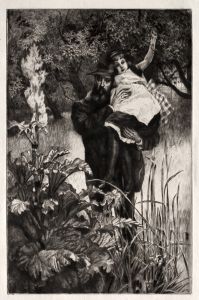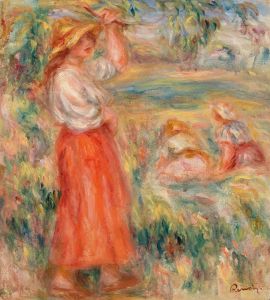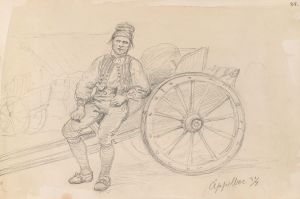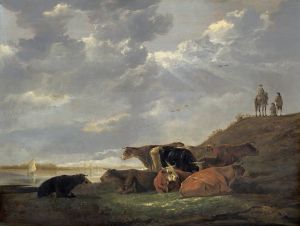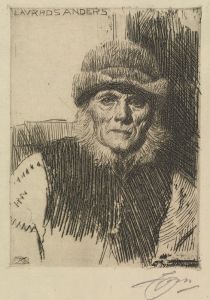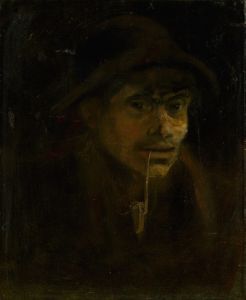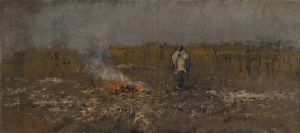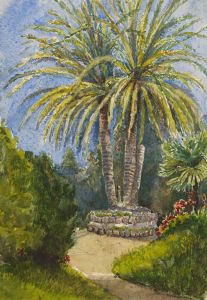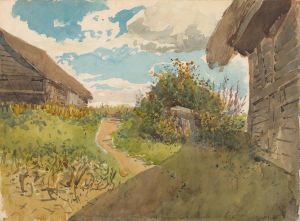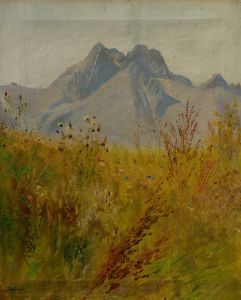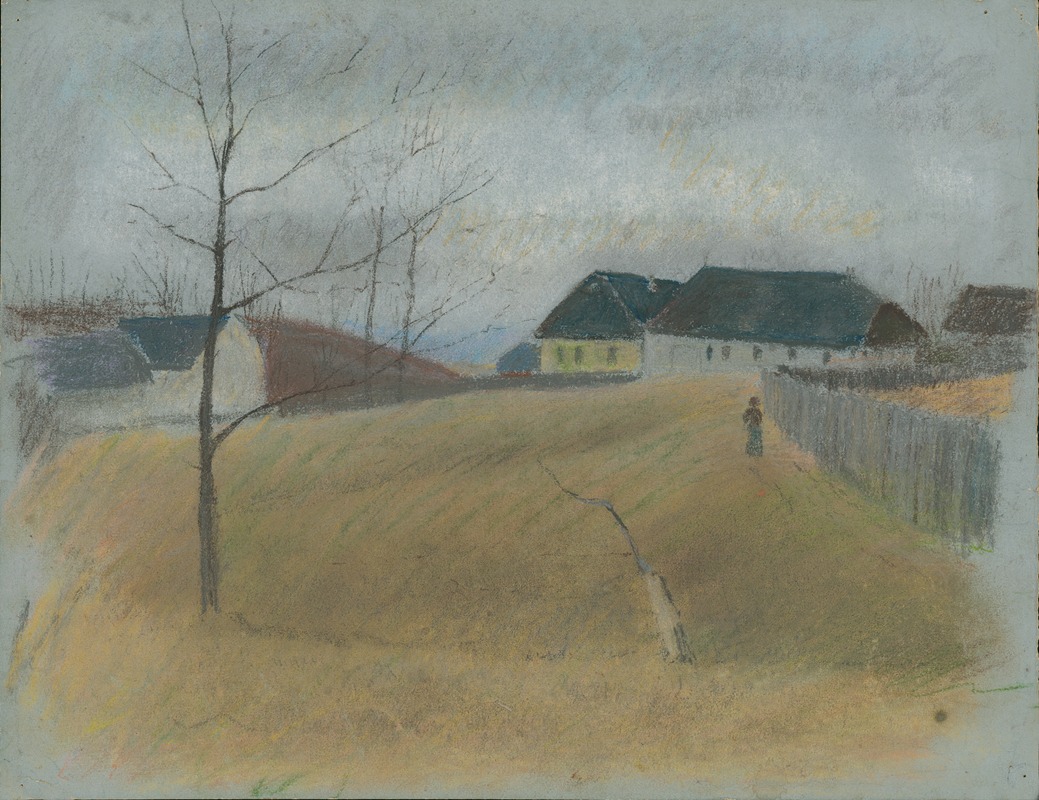
Na konci dediny
A hand-painted replica of Ladislav Mednyánszky’s masterpiece Na konci dediny, meticulously crafted by professional artists to capture the true essence of the original. Each piece is created with museum-quality canvas and rare mineral pigments, carefully painted by experienced artists with delicate brushstrokes and rich, layered colors to perfectly recreate the texture of the original artwork. Unlike machine-printed reproductions, this hand-painted version brings the painting to life, infused with the artist’s emotions and skill in every stroke. Whether for personal collection or home decoration, it instantly elevates the artistic atmosphere of any space.
Na konci dediny (At the Edge of the Village) is a painting by Ladislav Mednyánszky, a prominent Hungarian-Slovak painter of the late 19th and early 20th centuries. Mednyánszky, born on April 23, 1852, in Beckov, then part of the Kingdom of Hungary, is widely regarded for his atmospheric landscapes and poignant depictions of rural life and marginalized individuals. His works often reflect a deep sensitivity to the human condition and a profound connection to nature.
The painting Na konci dediny is believed to have been created during Mednyánszky’s mature period, a time when he focused on capturing the essence of rural environments and the lives of ordinary people. The title, which translates to "At the Edge of the Village," suggests a scene set on the outskirts of a rural settlement, a recurring theme in Mednyánszky’s oeuvre. His works often depict quiet, introspective moments, and this painting is no exception.
Mednyánszky’s style is characterized by a combination of realism and impressionistic influences. In Na konci dediny, he employs a muted color palette, with earthy tones and soft brushstrokes, to evoke a sense of tranquility and melancholy. The composition likely features elements typical of his work, such as a solitary figure, a humble dwelling, or a natural landscape, though specific details about the painting’s imagery are not widely documented.
Throughout his career, Mednyánszky was deeply influenced by his travels and personal experiences. He studied art in Munich and Paris, where he was exposed to various artistic movements, but he remained deeply connected to his roots in Central Europe. His works often reflect the social and economic realities of the time, particularly the struggles of the rural poor and the transient lives of wanderers and laborers.
Na konci dediny exemplifies Mednyánszky’s ability to convey emotion and atmosphere through his art. While the painting itself may not be as widely recognized as some of his other works, it remains an important piece within his body of work, showcasing his dedication to portraying the beauty and hardships of rural life.
Today, Ladislav Mednyánszky is celebrated as one of the most significant artists of his era in Central Europe. His works are held in high regard and can be found in major collections and museums, including the Slovak National Gallery and the Hungarian National Gallery. Na konci dediny, like many of his paintings, serves as a testament to his artistic vision and his empathetic portrayal of humanity.





